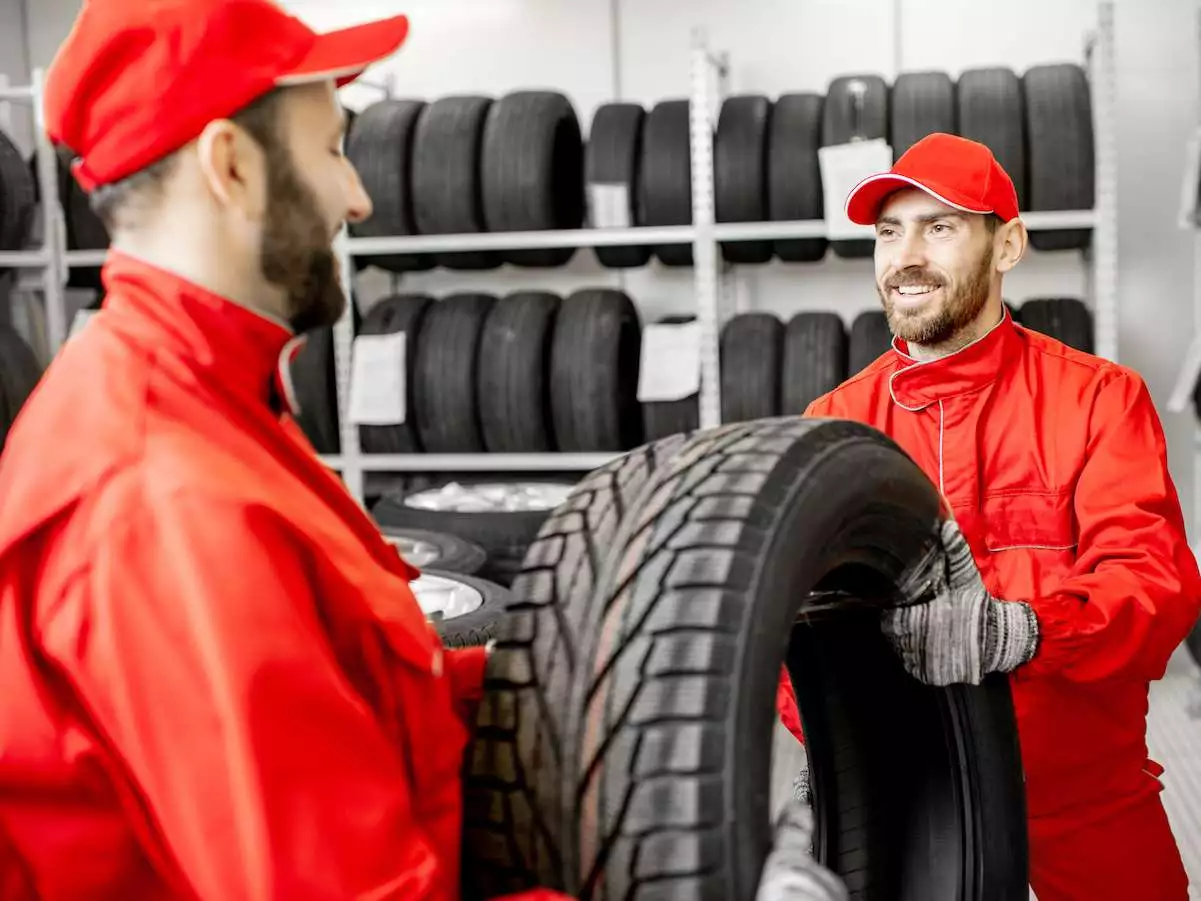Difference Between Tire and Wheel? [Complete Guide!]
Tires and wheels are used on a range of different vehicles, such as cars. The terminology used to describe a tire and wheel is sometimes a little difficult to understand. So, today I will explain the difference between a tire and a wheel.
A tire is a black rubber or synthetic rubber part of a wheel, whereas a wheel is the circular metal part that a tire attaches to. The wheel attaches to the axle of a car. A tire is replaced or repaired if it gets punctured, but the wheel is typically not changed unless it gets bent in a crash.
This is why you will often hear the phrase change the tire, rather than change the wheel. A tire and wheel can be separated, however, it’s generally difficult to do and requires a special tool called a bead breaker. Below, I will explain how a tire stays on a wheel, and how it is removed and put back on.
How a Tire Stays on a Wheel?
A tire can be removed from a wheel and is not stuck or bolted onto the wheel. However, the wheels of cars, bikes, and other vehicles generate a lot of torque, which you would think would cause the tire to slip against the rim. But here’s why a tire doesn’t slip against the wheel and stays in place.
A tire has a lip called a ‘bead’ made of strands of metal that are coated in synthetic rubber. The bead tucks into a groove in the wheel. When the tire is inflated, the bead pushes into the groove in the metal rim with a lot of force, holding it in place.
In everyday speech, people often will say tire when they mean the wheel and the tire together. For example, when they are talking about removing the wheel rim and the tire of a car they will say, ‘remove the tires’. However, technically a tire is only the black synthetic rubber part that is attached to the wheel.
In some cases, the synthetic rubber tire can slip against the metal rim when a vehicle is driven. But, this is not supposed to happen. The reasons this can happen are:
- The tire is mounted properly all the way around
- The wheel is slightly off alignment
- Too much lubrication was used when mounting the tire
- The bead has failed
When this happens, it’s typically best to take it to a tire store or a mechanic to identify why it’s happening. A tire is difficult to remove from a wheel unless a special tool called a bead breaker is used. Here’s a video that shows how a bead breaker works.
It’s important to note that a bead breaker does not ‘break the bead’ on a tire. And if you remove a tire using a bead breaker, it can be placed back on the tire.
There are different-sized bead breaker tools and a range of different ones. Bead breakers for bicycle and motorcycle tires are more miniature than those for cars, trucks, and airplanes.
Nowadays, car tires are typically not made of pure rubber. And are instead made of a synthetic rubber-like material that has been developed by chemists. Some car tires have a small amount of pure rubber. However, in general, buses, trains, and airplanes have more rubber in the tires than car tires.
The Difference Between a Rim, Wheel and Tire

In everyday speech, many people refer to the metal part inside a car wheel as a rim. For example, people will say, ‘that car has nice rims’. In reality, though, a rim does not mean the metal part of a car wheel. Instead, this is the wheel.
The rim is the outer edge of a wheel. Whereas the wheel is the name for the entire metal part of a… well, wheel. As mentioned above, the tire is the black synthetic or rubber part that attaches to the wheel.
In summary:
- Wheel – the entire metal part
- Tire – the black rubber/synthetic rubber part
- Rim – the thin metal edge around the wheel
However, in everyday speech, the words for each are often used interchangeably.
The Difference Between a Tire and a Tyre
In different English-speaking countries, the same words are often spelled slightly differently. Tire and tyre are two words that look very similar. So, here’s a summary of what the difference is between a tire and a tyre.
Tire and tyre are two different spellings for the black synthetic rubber part that is attached to the outside of a metal wheel. Tire is the spelling used in North America and Canada, whereas tyre is the spelling used in the United Kingdom (UK).
Australia and New Zealand are both English-speaking countries. However, the spelling used in these countries is most similar to the UK spelling. Therefore, in Australia and New Zealand, tyre is the preferred spelling rather than tire.
Do Cars Have Wheels or Tires?
Cars have an engine that rotates the axles on the front or rear. And in the case of four-wheel drive vehicles, both axles will generate force. In everyday language, people will often refer to tires as wheels and wheels as tires. So here’s the long and short of whether cars have wheels or tires.
As a general rule, cars have both wheels and tires. The wheel is the metal part of a wheel, and the tire is the black rubber or synthetic rubber part of the wheel. In everyday speech, ‘wheel’ can mean both the tire and the wheel together. But, technically, they are two different things.
The tire wheel typically has four holes that allow it to be installed onto the axle. It’s then screwed into place by four bolts. Sometimes, a hubcap is placed over the center of the wheel. This stops stones, glass, grains, and other objects on the road from getting into the rim and potentially scratching or denting it.




![What Kind of Acid is in a Car Battery? [With Explanation!]](https://vehicleuniversity.com/wp-content/uploads/2023/01/daily-car-check-check-out-the-distilled-car-batter-2021-08-26-17-53-37-utc-768x576.webp)
![Do Manual Cars Have Cruise Control? [Full Guide!]](https://vehicleuniversity.com/wp-content/uploads/2023/01/cruise-control-unit-in-the-new-car-close-2021-08-28-19-59-46-utc-768x572.webp)
![Can You Open a Car Door Underwater? [Here’s What to Know!]](https://vehicleuniversity.com/wp-content/uploads/2023/01/Depositphotos_52375185_XL-768x512.jpeg)
![Car AC Compressor Turns On And Off? [Meaning & Reasons!]](https://vehicleuniversity.com/wp-content/uploads/2023/01/ac-ventilation-deck-2021-08-26-17-12-30-utc-1-768x510.webp)
